若手研究者に最先端の研究環境を提供し、研究主宰者として自立して研究に専念させます。本コンソーシアムでは、研究設備のみではなく、メンターや大学教員による指導体制や共に研究や指導を行うポストドクター、大学院学生(特に博士課程学生)、および研究支援人材の存在などにも配慮し、実践的な質の高い研究活動を推進します。若手研究者を受け入れる機関は、それぞれの大学のシステムに応じて常勤ポストの獲得に注力し、そのポストを本コンソーシアムで共同利用することとし、若手研究者の業績や実質的な研究活動を適切に評価した上で、分野の適合性などを判断しながらキャリアを形成する仕組みを構築し、コンソーシアムとしてのテニュアトラック的運用を図ります。同時に、このコンソーシアムに所属する若手研究人材については、年俸制、エフォート管理、クロスアポイントメントなど人事処遇をコンソーシアム内でできる限り統一化し、コンソーシアム参加機関は、既存の人事制度を機動的に活用して、その処遇を受け入れるよう努めるものとします。これより、コンソーシアムに参加する若手研究者が所属機関を変更することが容易になり、単一の機関や部局による短期的なプロジェクト雇用による人材育成から、組織を横断して平準化された人事・予算措置のもと、継続的な雇用での人材育成へ移行が期待できます。
The Consortium provides a cutting-edge research environment where young researchers can devote themselves to their work. It offers not only research facilities, but also establishes a guidance structure composed of mentors and university faculty members. In the Consortium, post-docs, graduate students (particularly doctoral students), and research support personnel work together to advance practical, high-quality research. In accordance with each university’s system (i.e. systems that accept young researchers), individual institutions aim to acquire full-time post-docs who may then work collaboratively in the Consortium. This creates a framework that helps form a career path. Young researchers are better able to evaluate their achievements, their research activities, and their compatibility with different fields. HR handling of Consortium researchers (including matters related to salary, work management, and appointments) is standardized as much as possible within the Consortium. Consortium institutions are able to make flexible use of their existing HR systems and can incorporate them into handling of the Consortium’s HR. Through this, Consortium researchers can change their affiliated institutions in an easy way.
This development aims to change human resource development from a short-term, project-based system provided by a single institution or department to a continuous employment system that is based on personnel and budget provisions which are equalized across organizations.
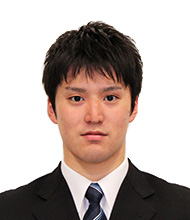
東京大学
大学院工学系研究科 機械工学専攻
助教 吉本 勇太
Assistant Professor
Department of Mechanical Engineering, School of Engineering,
The University of Tokyo
Yuta Yoshimoto
2017/4/1~現職 助教(Assistant Professor)
2016/1/1~2017/3/31 特任助教(Project Research Associate) 採用日(The date of adoption):2016/1/1
マイクロ・ナノスケールで発現する特異な熱流体現象を解明かつ制御することで,マクロスケールにおいて画期的な性能を発揮する革新的な機械システムを創出することを目指している.特に,高真空環境下における分子線実験や分子シミュレーション等を行い,分子論的視点から熱物質輸送の詳細な機序を研究している.
I have aimed to create innovative mechanical systems that exert dramatic performances at the macroscale by clarifying and controlling anomalous thermo-fluid phenomena emerging at the micro/nanoscale. Specifically, performing molecular beam experiments under high vacuum and molecular simulations, I have worked on the detailed mechanism on heat and mass transfer from an atomistic point of view.
- 専門分野(Specialized field)
- 分子流体力学,マイクロ・ナノスケール熱物質輸送,分子シミュレーション (Molecular fluid dynamics, Micro/nanoscale heat and mass transfer, Molecular simulation)
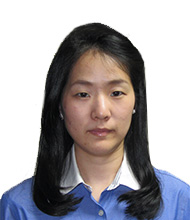
関西学院
理工学部 化学科
専任講師 大間知 潤子
Assistant Professor
Department of Chemistry,
Kwansei Gakuin University
Junko Omachi
2018/4/1~現職 専任講師(Assistant Professor)
2016/1/1~2018/3/31 東京大学 理学系研究科附属フォトンサイエンス研究機構 特任助教(Project Research Associate) 採用日(The date of adoption):2016/1/1
私の研究目標はレーザー加工を始めとする様々な用途に最適な光源を見極め、柔軟に光源を選択できるシステムを作ることです。そのために光源開発技術を身につけ、さらに光の波長変換及び位相周波数制御技術を利用して、固体やガス中の電子の運動を研究したいと考えています。
My research goal is to make a system in which we can select suitable light sources depending on several purposes such as laser manufacturing. For that goal, I would like to study laser technologies. Also, making use of wavelength conversion and phase and frequency control of light, I would like to study the kinetics of electrons in solids and gases.
- 専門分野(Specialized field)
- 光物性、光源開発(Solid state spectroscopy, Light source development)
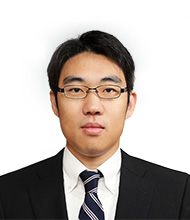
慶應義塾大学
理工学部 システムデザイン工学科
助教 山本 詠士
Assistant Professor
Department of System Design Engineering,
Keio University
Eiji Yamamoto
2018/4/1~現職 助教(Assistant Professor)
2016/4/1~2018/3/31 慶應義塾大学大学院 理工学研究科 総合デザイン工学専攻 特任助教(Project Research Associate) 採用日(The date of adoption):2016/4/1
細胞膜には細胞の機能維持に欠かせない重要なタンパク質が多数存在しており,様々な生体反応が起きています.私は分子動力学シミュレーションという手法を用い,細胞膜での生体分子の機能,拡散,相互作用,さらに,生体の大半を占める水分子の役割に着目し,研究を行っています.
There are many membrane proteins that play important roles in maintaining cell functions. My research theme is to investigate function, diffusion, and interaction of biomolecules in cell membranes using computational techniques such as molecular dynamics simulations. Moreover, I am interested in what the vast number of water molecules do in biological systems.
- 専門分野(Specialized field)
- 生物物理,計算科学(Biophysics, Computational Science)
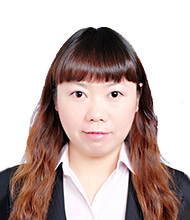
東京工業大学
工学院
特任助教 張 暁梅
Project Research Associate
Tokyo Institute of Technology, Graduate School of Engineering
Zhang Xiao-Mei
採用日(The date of adoption):2016/4/1
再生可能エネルギー分野やナノ医薬品に応用可能な半導体ナノ構造を用いたナノスケールデバイスの設計および製造。ナノ構造のデバイスへの応用を考えた際、形態、結晶性、ドーピング状態と関連する半導体ナノ構造の成長制御は非常に重要である。上記の目的で設計された半導体デバイスは物理的および化学的プロセスによって製造が可能である。例えば、半導体ナノ材料の転移のない単結晶成長は化学気相成長法によって作製が可能である。溶液法はナノ構造をフレキシブル基板上に低温作製する場合に適している。ナノ構造の結晶学的特徴を調べるなどの微細構造の特性評価は、機能デバイスの最適化に役立ってきた。さらに、ナノ構造を用いたナノデバイスは、様々な半導体技術により実現されている。本研究では、主にナノ構造太陽電池やZnO系バイオセンサーを対象とする。これらのデバイスの性能を向上させるためには、評価的フィードバックが非常に有効である。
Design and fabrication of nanoscale devices using semiconductor nanostructures for their application on renewable energy and nanomedicine. In regards to the nanostructures in-device functions, control growth of semiconductor nanostructures concerning their morphology, crystallinity, doping status is very important. The fabrication processes for the designed semiconductors are carried out by both physical and chemical methods. For example, single crystal with dislocation free volume of semiconductor nanomaterials are synthesized by chemical vapor deposition (CVD) method. Wet-solution method is suitable for fabricating the nanostructures on flexible substrate at a low temperature. Invariably, microstructure characterisation assisted in determining crystalline feature of the nanostructures and optimizing functional devices. Furthermore, integration of nanodevice using the nanostructures is realized by various semiconductor technologies. Nanostructured solar cells and ZnO-based biosensors are the main devices which are studied in my work. Moreover, to achieve satisfactory device performance for these device aspects, evaluative feedback is highly effective.
- 専門分野(Specialized field)
- 化学工学専攻(Department of Chemical Engineering)
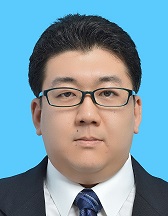
電気通信大学
レーザー新世代研究センター
特任助教 山越 智健
Research Associate
Institute for Laser Science, University of Electro-Communications
Tomotake Yamakoshi
採用日(The date of adoption):2017/3/1
近年では量子コンピューターや量子シミュレーターへの応用を目指した、マイクロケルビン以下に冷却された格子ポテンシャル中の冷却原子についての研究が盛んに行われている。私の研究目的は基礎理論の観点から、最近の実験を対象として、外場による原子のコヒーレント制御に対して数理解析と数値シミュレーションを行い、実験研究への理論的指針を与えることである。
Recently, ultracold atoms in a periodic potential have been investigated eagerly because of their great promise for numerous applications to quantum computers, quantum simulators and so forth. My research goal is to provide a guideline for novel and fascinating ultracold experiments from a basic theoretical point of view. To this end, I'm going to perform numerical and analytical analyses of recent experiments about coherent control of ultracold atoms by external fields.
- 専門分野(Specialized field)
- 冷却原子のダイナミクス(Theoretical studies of dynamics of ultracold atoms)
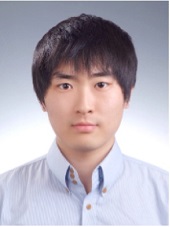
東京大学
大学院工学系研究科 機械工学専攻
特任講師 Il Jeon
Project Lecturer
Department of Mechanical Engineering, School of Engineering,
The University of Tokyo
Il Jeon
2018/4/1~現職 特任講師(Project Lecturer)
2017/3/16~2018/3/31 特任助教(Project Research Associate) 採用日(The date of adoption):2017/3/16
多様な材料を光電変換素子に適用することを 研究テーマとしている。より具体的には、炭素材料を作って太陽電池に応用することが中心である。炭素材料にはナノチューブ、グラフェン、フラーレンなどがあり、それぞれ太陽電池素子内の電極 あるいは有機半導体材料として使われる特長的な性質を持っている。この特性をうまく活かして太陽電池の性能を上げ、さらには新しいタイプの太陽電池を作ることも可能である。 一言で言えば、 環境にやさしい材料を使って再生エネルギー素子の高性能化を実現することが私の研究の目的である。
My research involves an application of different materials in optoelectronic devices. The current focus is on the growth of different carbon materials for solar cell applications. Carbon allotropes, namely carbon nanotubes, graphene, and fullerenes, have unique properties that match charge conductive and selective layers in solar devices. Utilising these properties, we can increase the performance and even create a new type of solar cells. In a nutshell, I am producing the alternative energy devices using the eco-friendly materials.
- 専門分野(Specialized field)
- 有機合成、炭素材料、太陽電池の応用(Organic synthesis, Carbon material growth, Photovoltaics application)
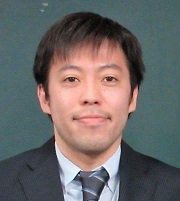
東京大学
大学院工学系研究科 附属光量子科学研究センター レーザー新世代研究センター
特任助教 篠原 康
Project Research Associate
Photon science center, School of Engineering,
The University of Tokyo
Yasushi Shinohara
採用日(The date of adoption):2018/10/1
最先端のコヒーレント光源を駆使することで、究めて短い時間で物質中電子がどのように振舞うのかを観測することが出来るようになりました。こうした電子ダイナミクスの理解は科学的に興味深いだけでなく、レーザー加工に代表される光技術の産業応用における学理の一端を担っています。私は数値シミュレーションを通じて、コヒーレント光に駆動される固体の電子ダイナミクスの理論的研究に取り組んでいます。
State-of-the-art coherent light allows us to observe ultrafast electron motion in materials.Comprehension of the electron dynamics is not only scientifically interesting but also a part of the foundation for an industrial application with optical technology such as laser processing.I theoretically investigate the electron dynamics in materials driven by the coherent light source, by performing numerical simulations.
- 専門分野(Specialized field)
- 計算物質科学、光科学(Computational materials science, photon science)
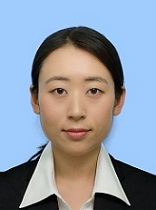
電気通信大学
レーザー新世代研究センター
特任助教 道根 百合奈
Research Associate
Institute for Laser Science, University of Electro-Communications
Yurina Michine
採用日(The date of adoption):2020/6/1
Development of high damage threshold optics for high power and high energy laser system. Up to now, two order of magnitude higher laser flux can be controlled by new ozone mixed gas diffraction optics. Real application to high power laser system with these new development optics will be completed in a few years.
- 専門分野(Specialized field)
- レーザー科学(Laser Science)





